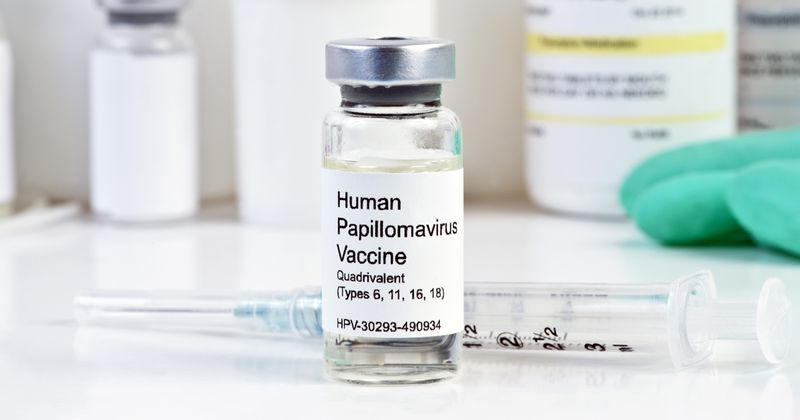What is HPV?
Human papillomavirus, or HPV, is the most common sexually transmitted infection affecting both males and females and is a group of more than 200 related viruses.
Sexually transmitted HPV types fall into two groups: low-risk HPV and high-risk HPV. Low-risk HPV rarely causes disease but can cause warts around the genitals, anus, mouth or throat. High-risk HPV can cause several types of cancer. There are about 14 high-risk HPV types, and two of the types — HPV16 and HPV18 — are responsible for most HPV-related cancers.

Nearly 80 million people are currently infected with HPV in the United States and about 43 million people were diagnosed with HPV in 2018, according to the CDC, many are people in their late teens and early 20s.
Unlike other sexually transmitted infections, most signs and symptoms of HPV are nonexistent. Of the more than 40 types of HPV, a small number may lead to cervical, vulvae, vaginal and anal cancers in women or anal and penile cancers in men. Various types may also transmit infection to the mouth (including the base of the tongue and tonsils) and throat (known as oropharyngeal cancer) and have been associated with an increased risk for cardiovascular disease.
Screening and prevention
Screening for HPV is usually carried out by a Pap smear or by cervical cytology to detect abnormal cells. When abnormal cells are detected, a colposcopic inspection is recommended. During this procedure, biopsies are performed and abnormal cells are removed via cauterizing loop or, more commonly, by cryotherapy.
According to the CDC, using condoms can reduce the risk of getting genital HPV. However, when compared with other sexually transmitted infections, condom use provides a lesser degree of protection because HPV can also be transmitted via exposure to infected skin or mucosal surfaces not protected by condom use.
HPV vaccine
Although there is no current treatment for HPV, the two HPV vaccines (Cervarix, GlaxoSmithKline, and Gardasil, Merck) provide protection from infection with HPV types 16 and 18 — the cause of 70% of cervical cancers. Gardasil protects against nine HPV types, including two low-risk HPV types and seven high-risk HPV types. The vaccine is given in three injections throughout the course of 6 months.
According to CDC, all boys and girls should get vaccinated between the ages of 9 and 12 years. Studies show the number of girls vaccinated before age 17 greatly reduced the cervical cancer incidence by nearly 90% during an 11-year period.
Vaccines are recommended for males and females through age 26 years for those not vaccinated when younger. Children vaccinated before age 15 years need two doses to be protected. Those who received the first dose at or after age 15 years will receive three doses to be protected. The HPV vaccine is also recommended for men who have sex with men, as well as for men and women with compromised immune systems, including people living with HIV/AIDS, through age 26 years.
HPV in women
HPV is so common that 80% of women who are sexually active will get at least one type of HPV at some point in their lifetime. HPV can cause problems in pregnant women. On rare occasions, mothers with genital HPV can pass on the virus to their baby during delivery, and the baby may develop recurrent respiratory papillomatosis. This is a condition in which warts grow in their airways and is referred to as juvenile-onset recurrent respiratory papillomatosis in older children.
HPV during pregnancy can also cause cervical cells to change, so women should be regularly screened for cervical cancer during and after pregnancy. Genital warts that appeared before or during pregnancy can bleed and may grow (in size and number) due to hormonal changes. If the warts block the birth canal, a cesarean section may be necessary.
HPV in men
HPV in men is usually asymptomatic and goes untreated. Genital warts caused by certain HPV strains are the only signs that this virus is present in men. HPV-related oropharyngeal cancer is more common in men.
The HPV vaccine has been found to be safe and effective for men aged 9 to 26 years, and it is recommended that boys aged 11 or 12 years should receive the series of doses. Two doses of the HPV vaccine given to boys at aged 11 or 12 years can protect against cancers caused by HPV.
Additional information can be found by searching the following websites:
www.cancer.gov/about-cancer/causes-prevention/risk/infectious-agents/hpv-and-cancer
www.cancer.gov/types/cervical/understanding-abnormal-hpv-and-pap-test-results
www.cancer.org/cancer/cancer-causes/infectious-agents/hpv/hpv-and-hpv-testing.html
www.cdc.gov/std/hpv/stdfact-hpv.htm
www.cdc.gov/std/hpv/stdfact-hpv-vaccine-young-women.htm
my.clevelandclinic.org/health/diseases/11901-hpv-human-papilloma-virus
www.fda.gov/consumers/women/hpv-human-papillomavirus
www.heart.org/en/news/2019/04/22/evidence-grows-for-an-hpv-heart-disease-connection
www.mayoclinic.org/diseases-conditions/hpv-infection/symptoms-causes/syc-20351596
medlineplus.gov/lab-tests/human-papillomavirus-hpv-test/
www.ncbi.nlm.nih.gov/pmc/articles/PMC6609359/
www.nfid.org/infectious-diseases/facts-about-human-papillomavirus-hpv-for-adults/
www.womenshealth.gov/a-z-topics/human-papillomavirus
